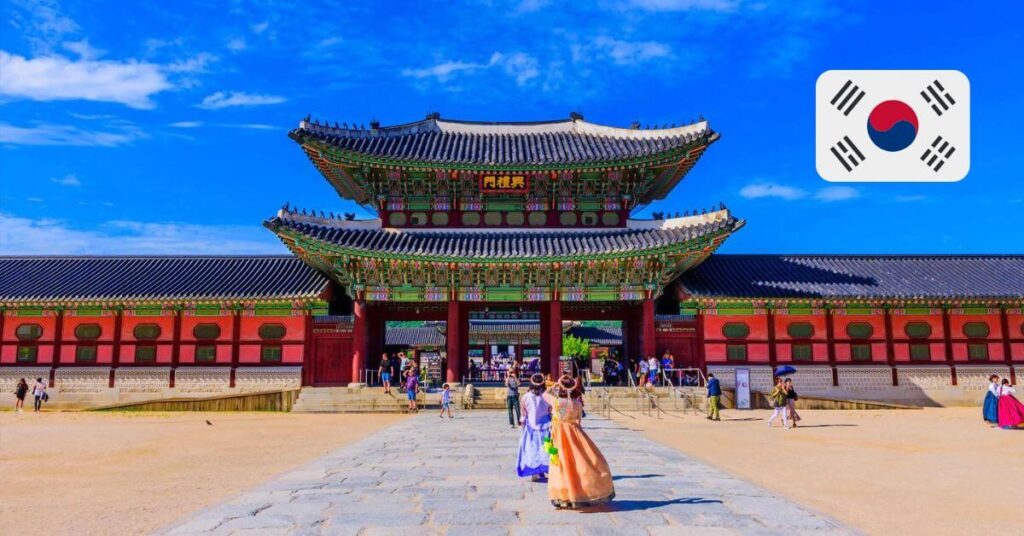A Complete Guide to Visit in Hwaseong Fortress – Hwaseong Fortress is a great architectural masterpiece located in Suwon,South Korea. Built in the 18th century during the reign of King Jeongjo of the Joseon Dynasty, the fortress was designated a UNESCO World Heritage Site in 1997 and has become a popular cultural destination that attracts visitors from around the world. place in the world.
Introduction to Hwaseong Fortress Korea
Hwaseong Fortressis located in Suwon city, South Korea. Suwon is a large city located south of Seoul, about 30 km from Seoul. This fortress has a unique design, a delicate combination of Eastern and Western architecture.
The walls of stone and sand surrounding the fortress create a circle with four main doors facing east, west, south and north. In the past, this place witnessed many important historical events and played an essential role in protecting the land around the Suwon area.
Not only an architectural wonder, Hwaseong is also associated with the rich and traditional culture of Korea. When coming here, visitors have the opportunity to explore attractive attractions such as Hwaseomun Gate, Hwaseong Haenggung Palace and Hyeonungseonwon Pavilion. The landscape around the fortress also attracts visitors because of the harmony between nature and classical architecture.
History of Hwaseong Fortress
Hwaseong Fortressis a historical architectural masterpiece of Korea, built in the 18th century during the reign of King Jeongjo (1752-1800) of the Joseon Dynasty. Construction of the fort began in 1794 and was completed in 1796.
Before the construction of the fortress, the Suwon area was an important location in the defense of the capital Hanyang (now Seoul). However, King Jeongjo found that this position was vulnerable to attack and did not meet the requirements of defending the country. Therefore, he decided to build a strong fortress at Suwon to protect the area and honor his two predecessors.
Hwaseong Fortress was built under the guidance of the famous architect of the time, Jeong Yak-yong (1762-1836), also known as Dasan. He was a talented writer, scholar and architect who made important contributions to the construction of Hwaseong.
Hwaseong Fortress has a circular design with a circumference of about 5.74 km and 5-6 meters high. It includes 4 main doors facing East, West, South and North. The fortress’ walls are built from stone and sand, and inside there is a specialized moat system to enhance protection.
When buildingHwaseong Fortress, King Jeongjo put a lot of enthusiasm and effort into this project and he also closely supervised the construction progress. Once completed, the fortress played an important role in the defense of Suwon and was also used as a favorite palace of King Jeongjo.
In 1997, Hwaseong Fortress was designated a UNESCO World Heritage Site because of its important role in the history and culture of Korea as well as its unique architectural beauty. Currently, it is a famous tourist destination and is visited and explored by many domestic and foreign tourists.
How to Visit the Hwaseong Fortress
To move toHwaseong FortressKorea, you have some popular transportation options as follows:
From Seoul:
– Subway: You can use the Seoul Subway service. From Seoul subway stations, go to Suwon station (Seoul Subway Line 1). Arriving at Suwon Station, you can walk or use other public transportation to get to Hwaseong Fortress.
– Bus: There are many bus routes from Seoul to Suwon and then you can transfer to buses going to the fortress.
From Incheon or Incheon International Airport:
You can use the Incheon Subway service or the Airport Express (AREX) train from Incheon Airport to Seoul, then continue to Suwon Station (Seoul Subway Line 1) as mentioned above.
From neighboring cities:
If coming from other nearby cities, visitors can use the subway or bus to get to Suwon and then go to Hwaseong Fortress.
Once you arrive in Suwon, you can easily get to Hwaseong Fortress by public transportation such as bus or taxi. The fortress is located near downtown Suwon, so getting from the subway station or bus station to the main destination is not too complicated. You can also walk from the downtown area to the fortress if you want to enjoy the urban atmosphere and explore the local environment.
Architecture of Hwaseong Fortress Korea
The architecture ofHwaseong Fortressharmoniously combines Eastern and Western architectural styles. Built under the direction of King Jeongjo and architect Jeong Yak-yong (Dasan) in the 18th century, this fortress possesses the elegant and sophisticated beauty of Joseon architecture.
The city wall of Hwaseong Fortress was built of stone and sand, in a circular shape with a circumference of about 5.74 km. The height of the wall ranges from 5 to 6 meters. In particular, the wall has a unique technique of using sand from the Suwon River to make the wall stronger and provide protection.
Hwaseong Fortress has four main gates, facing East, West, South and North. Each main door is designed with large doors and majestic stone pillars, creating a solemn and majestic beauty.
This fort is surrounded by a deep moat, designed with the purpose of enhancing the fort’s protection. The unique mechanical system helps regulate the water level in the moat, keeping the water always rising and falling, protecting the fortress from attacks.
Located within the scope of Hwaseong Fortress, Hwaseong Haenggung Palace is where King Jeongjo often rested and worked when coming to Suwon. The palace was built with sophisticated sculptures and carries the traditional architecture typical of the Joseon Dynasty.
Sights at Hwaseong Fortress
Hwaseomun Gate
Hwaseomun Gate is one of the important main gates ofHwaseong Fortress. This is an incredible and proud architectural masterpiece of the country. Built in the 18th century during the reign of King Jeongjo in the Joseon Dynasty, Hwaseomun Gate played an important role in protecting and monitoring activities around the fortress.
Hwaseomun Gate was built with the technique and enthusiasm of contemporary artisans. With an imposing design, the gate is nearly 6 meters high and more than 12 meters wide. This is the only main gate of Hwaseong Fortress that has the appearance of a palace.
The gate has four large stone pillars and two layers of strong wooden doors. Two layers of wooden doors help increase strength and protection. The highlight of the project is the intricately carved motifs on the stone pillars and wooden doors. These motifs represent images of the Han River, mountains, animals and plants. All create a unique and interesting art space.
Hwaseomun Gate played an important role in keeping Hwaseong Fortress safe from outside attacks. It is also a destination that attracts tourists from all over the world, where they have the opportunity to explore the unique architectural beauty and heroic history of Korea.
Hwaseong Haenggung Palace
Hwaseong Haenggung Palacelocated at Hwaseong Fortress is a splendid and unique palace that plays an important role in the country’s history. This palace was one of King Jeongjo’s favorite secondary palaces when he came to Suwon. Completed in 1796, the building was not only used as a resting and working place for the king but also played an important role in organizing important political and cultural events.
With a splendid and sophisticated architectural design, Hwaseong Haenggung Palace possesses the traditional beauty of Joseon architecture. It features intricate carvings and traditional Korean motifs, from the impressive main door to the conference rooms and the king’s bedroom.
In addition to its political role, this palace is also associated with the romantic and family stories of King Jeongjo. This is where he often spent time with the queen and her family, enjoying memorable moments together.
The steps atHwaseong Fortresswill take visitors back to the past and feel the unique historical beauty of Korea. This is one of the places not to be missed if you set foot in the land of kimchi and want to discover the secrets and wonderful stories of a great bygone era.



